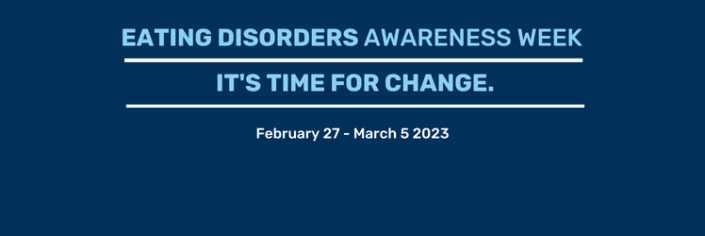In the world of public health prevention, we have an idea called “strategic science.” Basically, the idea is that when we set out to design a new study, we ought to be thinking about how the study findings could be used by policymakers and communities to make change happen to benefit people – real people, like you or your children, your friends and neighbors, or the people in a neighborhood across town. It’s a simple idea, but it demands a pretty radical departure from the more typical way that study ideas get out of the gate. Here’s how it usually goes: A researcher reads what other scientists have published, goes to a few conferences, and then sits down with some colleagues to come up with a new study that will generate results to fill a gap in what has been published so far. They may succeed in making some new discovery to fill in that gap in scientific knowledge, but that doesn’t mean they will be any closer to filling the gap in action to make meaningful change in the lives of real people. Not only is this process frustratingly slow, it’s not even on the right track to get us where we need to go.
That’s where strategic science comes in. Public health luminaries Kelly Brownell and Christina Roberto explain that the goal of strategic science is to fill not just any gap in what’s known, but instead to fill “gaps in knowledge important to policy decisions” that will result in positive action. This should happen based on the free flow of ideas across scientists, policymakers, and community advocates at all phases of the research, especially at the beginning before a study is designed. There is a lot to like about strategic science. One, it’s a way to vastly increase the chances that study findings will be relevant and can point to feasible, public health law and policy changes that decision makers can champion to have large-scale effects for a whole city or state or even the whole country. Two, because a strategic-science study’s findings are by design relevant and feasible to act on, they can be used to catalyze change in the near term. Yes, near term. Not in some distant 30 years from now. In three years, or who knows, maybe this year.
We have every reason to want to get the prevention train moving much faster. Thirty million Americans will struggle with an eating disorder in their lifetimes, and far more are affected by serious and debilitating eating disorder symptoms. Like all significant public health problems, we can’t treat our way out of this. The demand is just too great for our healthcare system. And we wouldn’t want to depend on treatment alone anyway. If we can prevent eating disorders on a large scale – on the scale that public health prevention efforts usually focus — we will also be preventing an ocean of suffering, healthcare and other costs to individuals, families, and society, and lives lost.
So let’s say you buy my argument so far that we should be using strategic science to accelerate public health impact on eating disorders prevention. What are some examples of large scale public health prevention efforts that led to massive improvements in health? Think policies that bring us clean water and sanitation, laws requiring lifesaving seatbelts and airbags in cars, bans on indoor smoking in workplaces, and more. What are our equivalent targets in the world of eating disorders prevention? Here are some ideas: diet pills and the dieting industry’s ubiquitous weight-loss messages and products; the fashion industry and its drive for “size zero” regardless of the consequences; widespread weight-based discrimination that creates a hostile environment for all of us, especially those of us living in larger bodies, and with no protections on the books almost anywhere in the country. These may seem like Goliath-sized battles to take on, but that’s the beauty of strategic science: When we all work together — scientists, policymakers, and community advocates — we make a powerful trifecta for catalyzing change for prevention.
Wondering what you can do? Here are a few examples of strategic science in action where you can join in or maybe be inspired to get something started in your community:
- We don’t sell kids tobacco, so why sell them diet pills? My group, the Strategic Training Initiative for the Prevention of Eating Disorders (STRIPED), is working in partnership with the Massachusetts-based Multi-Service Eating Disorders Association, NEDA, and Massachusetts Rep. Kay Khan to introduce a new bill in the state legislature to ban the sale of diet pills and dietary supplements for muscle building to minors. The research is clear that the products are dangerous. States have the power to step in and protect youth. Find out what you can do to support the Out of Kids’ Hands Campaign in Massachusetts or start one up in your state.
- Why should models have to sacrifice their health for a pay check? A strategic-science study that STRIPED carried out in partnership with Model Alliance, the leading U.S. labor organizing group for professional models, showed for the first time that more than half of models have been directly pressured by agents to lose weight to get a job. Now NEDA and Model Alliance are leveraging the study results to spearhead a national petition, signed by models and advocates, to fashion industry powerbrokers behind this month’s New York Fashion Week. Add your name to this historic petition calling for safer and saner working conditions for models.
- Is it time to take a page from the civil rights movement to put an end to fat stigma? The Rudd Center for Food Policy and Obesity at University of Connecticut basically wrote the book on strategic science in the realm of weight discrimination and what policymakers and advocates can and should do about it. Putting that research to good use, the city of Reykjavik in Iceland recently banned weight discrimination. And now with a new bill sponsored by Rep. Byron Rushing, Massachusetts seeks to join Michigan as the only other U.S. state that prohibits discrimination based on weight and height in employment, public services, and more. Team up with the Rudd Center, STRIPED, and NEDA to support the campaign in Massachusetts or find out how you can work with your city or state elected officials to get legislation in your area.
Dr. Austin is Professor of Social and Behavioral Sciences, Harvard T.H. Chan School of Public Health and Professor of Pediatrics, Harvard Medical School and Boston Children’s Hospital, Division of Adolescent and Young Adult Medicine. She is the Director, Strategic Training Initiative for the Prevention of Eating Disorders (www.hsph.harvard.edu/striped), President of the Eating Disorders Coalition, and Secretary of the Board of Directors of the Academy for Eating Disorders.






